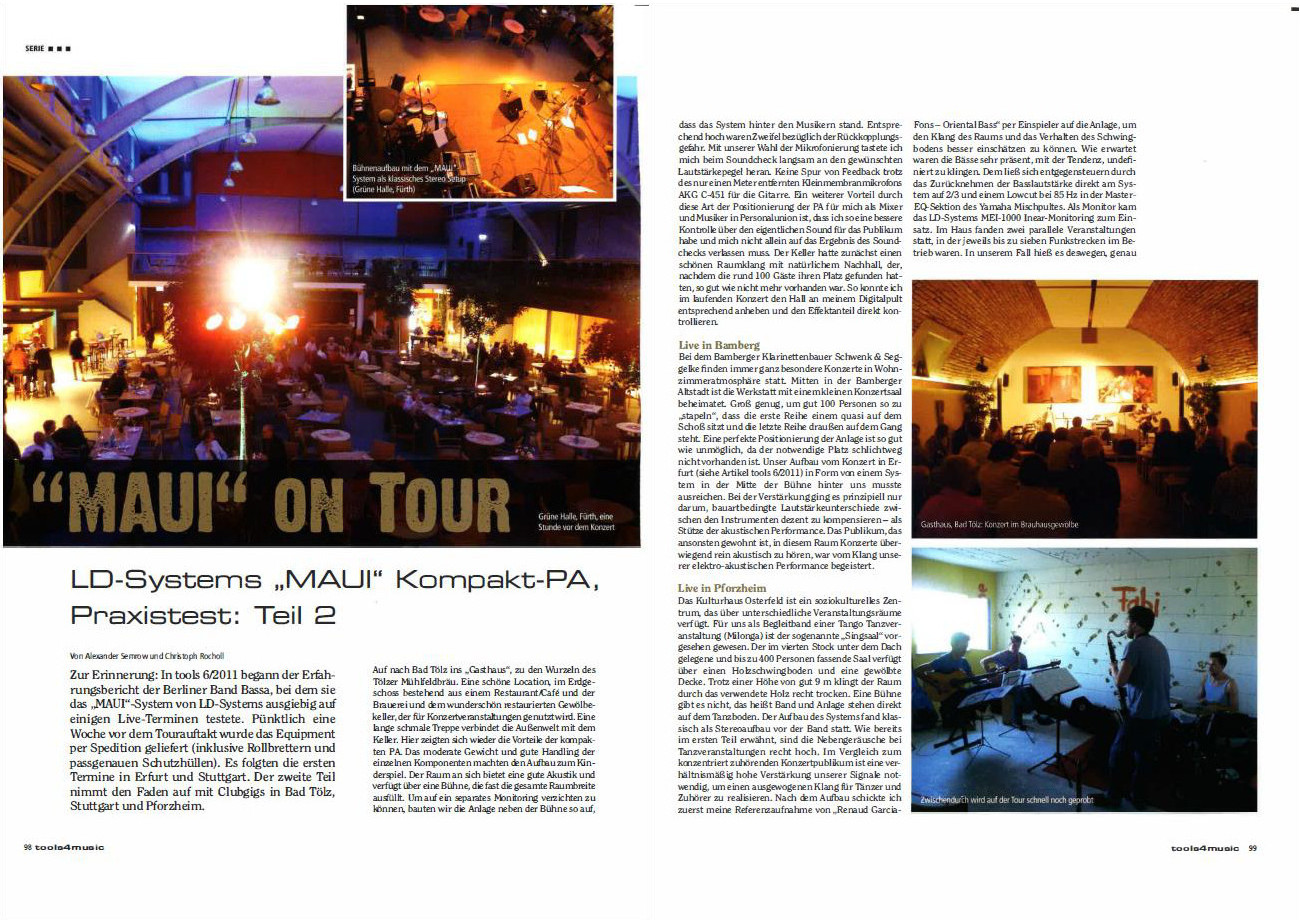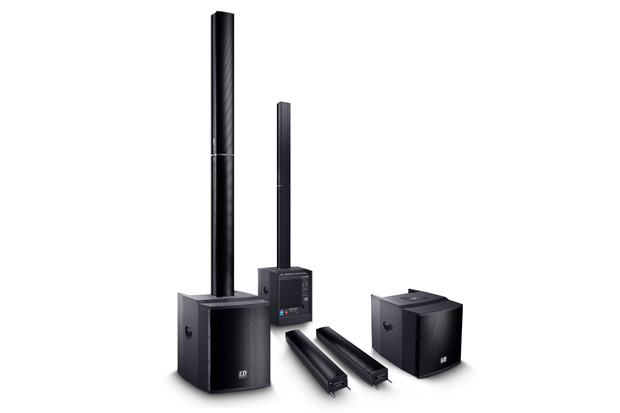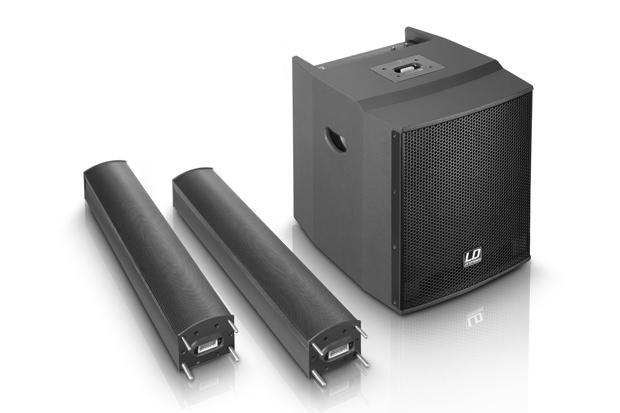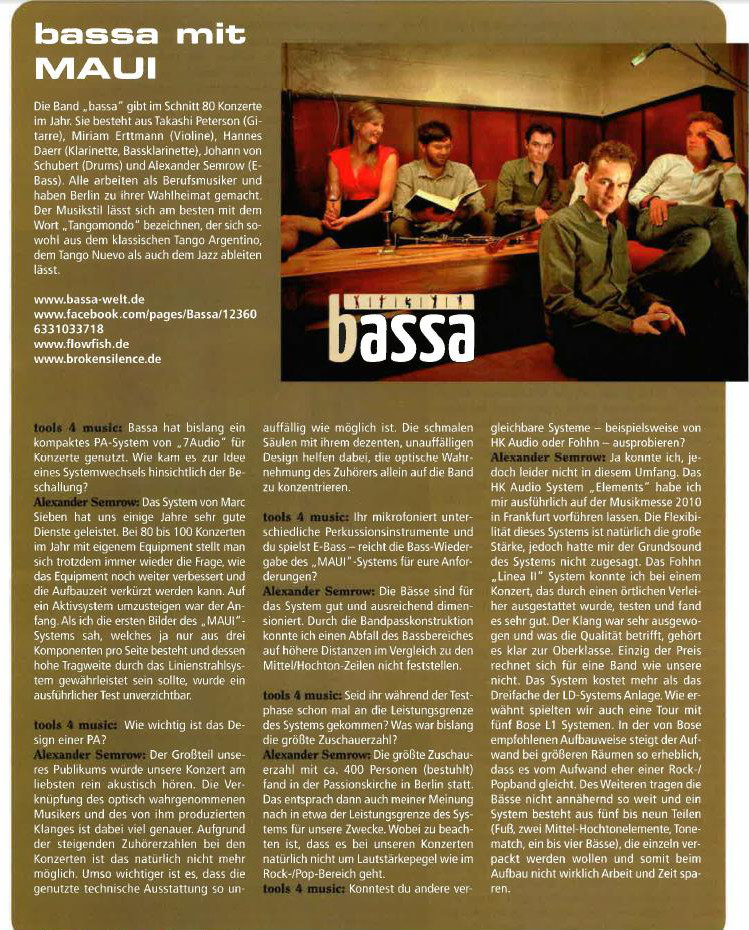LD Systems “MAUI” compact-PA, practical test: Part 2 – Test report by tools4music
As you may recall: Tools 6/2011 featured the first part of a road report by the Berlin band Bassa, who put LD Systems’ “MAUI” system through its paces at some live dates. The equipment (including dollies and form-fitting protective covers) arrived by forwarding agent right on time a week before the start of the tour. The first dates were in Erfurt and Stuttgart. Part Two picks up with club gigs in Bad Tölz, Stuttgart, and Pforzheim.
On to the “Gasthaus” in Bad Tölz, the home of Tölzer Mühlfeldbräu beer. This lovely location consists of a restaurant/café and the brewery on the ground floor and a beautifully restored vaulted cellar in which concerts are held. The cellar is connected to the outside world by a long, narrow stairway. In this situation, the advantages of the compact PA become apparent once again. The moderate weight and ease of handling of the individual components made setup very easy. The room offers good acoustics and has a stage that fills nearly the entire width of the room. To eliminate the need for a separate monitoring system, we set up the system next to the stage so that it was behind the musicians. Accordingly, we were more than a little concerned about the risk of feedback. Using our selection of microphones, during the sound check, I slowly eased the volume up to desired level. There wasn’t a hint of feedback although the AKG C-451 small-diaphragm microphone for the guitar was only a metre away. For me, doing double duty as musician and soundman, another advantage of positioning the PA in this way is that it gives me more control over the actual sound for the audience so that I don’t have to rely solely on the results of the sound check. At first the cellar had a pleasant acoustic atmosphere with natural reverberation. This had all but disappeared, however, by the time the nearly 100 guests took their seats. This way, I was able to boost the hall accordingly on my digital mixer and control the balance between the dry and effects signals directly during the concert.

Live in Bamberg
The Bamberg clarinet builders’ Schwenk & Seggelke host concerts that are always very special because they take place in a living-room atmosphere. The workshop, which also houses a small concert space, is located in the centre of Bamberg’s old town district. It is large enough to “stack” around 100 people so that the first row is virtually sitting in the musicians’ laps and the last row is standing outside in the hallway. It is practically impossible to position the system in an ideal manner because there just isn’t enough space. We had to make do with the same configuration used at our concert in Erfurt (see the article in tools 6/2011) in the form of one system behind us in the middle of the stage. In principle, we used the amplification only to provide discrete compensation for the differences in volume between the varying types of instruments – as support for the acoustic performance. The audience, which is otherwise used to hearing mostly strictly acoustic concerts in this room, was delighted with the sound of our acoustic-electric performance.
Live in Pforzheim
The Kulturhaus Osterfeld is a social and cultural centre with various event spaces. We have been booked into the so-called “Singsaal” (“singing hall”) as the band for a tango dance event (Milonga). The hall, which is under the roof on the third floor and holds up to 400 people, has a sprung wooden floor and an arched ceiling. Despite a height of over 9 m, the room sounds very “dry” because of the wood used. There is no stage, so the band and the system are right on the dance floor. The system was set up in a classic stereo configuration in front of the band. As mentioned in Part 1, there is a lot of incidental noise at dances. In comparison with a concert audience that is focused on listening, our signals require a relatively high level of amplification to obtain a balanced sound for dancers and listeners. After setup, I first played my reference recording of “Renaud Garcia-Fons- Oriental Bass” through the system in order to get a better estimation of the sound of the room and the behaviour of the sprung floor. As anticipated, the bass was extremely present with a tendency toward muddiness. I was able to counteract this by dialling back the bass volume to 2/3 directly at the system and setting a low-cut at 85 Hz in the Master EQ section of the Yamaha mixer. We used LD Systems’ MEI-1000 in-ear monitoring system.

There were two parallel events going on in the building, each of which had up to seven wireless circuits in operation. In our case, this meant having to examine very carefully where there was room for us in the available range of frequencies. After all, we also had eight wireless circuits in operation. After a careful comparison with the frequencies being used in the other rooms, we had no trouble whatsoever with crosstalk during the event. The MEI-1000 system is very easy to set up and especially pleased our violinist because of the small receivers. We quickly saved a monitor mix on the Yamaha 01V mixer during the sound check and just like that we were able to look forward calmly to a long evening of dancing. In the end, the master faders were at approx. 70 percent – so there was still power to spare. The sound in the room, which was filled with more than 100 dancers and an additional 100 listeners, was clear and well-defined.
Grüne Halle, Fürth
A “hall” in the truest sense of the word. A market hall, bordered right and left by businesses and market stalls, with centrally placed tables and chairs in the middle where patrons could eat. Although the venue was well-equipped technically and the promoter was highly sceptical of the LD Systems rig that we brought with us, we set up the system in a classic stereo configuration in front of the stage. The acoustically optimised hall is over 100 m long, 30 m wide, and 15 m high. Absorbers throughout the ceiling area and on the long sides of the ground floor help make the acoustics more pleasant. In order to avoid high-energy reflections, the windows all along the upper sections of the long sides were tilted. At this event, the system was clearly able to score thanks to its high carrying power. Even way in the back, audience members were able to enjoy balanced sound without exposing the first few rows to intolerably high volume levels. Due to the size of the place, the bass volume controls were turned up all the way. Even here, I didn’t notice any drop-off in the bass at an extended distance. On the whole, the system seems very well-balanced to me. By the way, the promoter who was so sceptical about the “MAUI” at first was positively surprised by the system.
After the tour
The tour test was a lot of fun. In terms of ease of transport and available output, the system is just right for most of the events for which bassa is booked. Setup goes quickly. The workmanship is impressive. Handling is a cinch with the protective covers and dollies. The system is unobtrusive in appearance and represents an extraordinary value for the money. We played twenty concerts with the “MAUI” and don’t have a single complaint. In short: “MAUI” can stay!
For additional information, go to:
http://www.ld-systems.com/en/series/maui-series/maui-28-compact-column-pa-system-active/
Source: tools4music, Germany
Leave a Comment
You must be logged in to post a comment.












